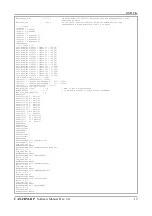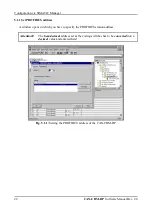
Functionality of the Local Firmware
CAN-CBM-DP
Software Manual Rev. 2.0
7
input
2
3
1
0
Byte-no.
Direction
Identifier
CAN
Profibus
output
Slave
Address
xyz
(coding
switch)
Profibus
CAN
2
3
4
5
1
0
Tx-Id_a
Tx-Id_a
Tx-Id_a
Tx-Id_a
Rx-Id_b
Rx-Id_b
Rx-Id_b
n
n+1
Tx-Id_k
Tx-Id_k
Tx-Id_a
Tx-Id_a
Rx-Id_b
m
m+1
Rx-Id_l
Rx-Id_l
2. Functionality of the Local Firmware
The following figure represents the functionality of the firmware.
Fig. 2.1.1:
Overview of functions of the CAN-CBM-DP module
2.1 PROFIBUS-Slave Address
The CAN-CBM-DP module simulates a slave module on the PROFIBUS side. The slave address is set
by means of coding switches at the module. When switching on the module the hexadecimal
PROFIBUS address set is requested. The settings have to be changed before switching on the module,
because changes are ineffective during operation.
The address range which can be set is
hexadecimal
03 to 7C or
decimal
3 to 124. If an address is set
which is smaller than 3 (decimal) or smaller than 03 (HEX), address 3 is valid. If an address is set
which is larger than 7C (HEX) or larger than 124 (decimal), address 124 is valid.
The upper coding switch (SW211, HIGH) is used to set the MSBs, while the LSBs are set by means of
the lower coding switch (SW210, LOW).
The PROFIBUS-slave address can
only
be set via coding switches. It
cannot
be programmed by means
of a class 2 master via the command ‘Set_Slave_Address’.












































